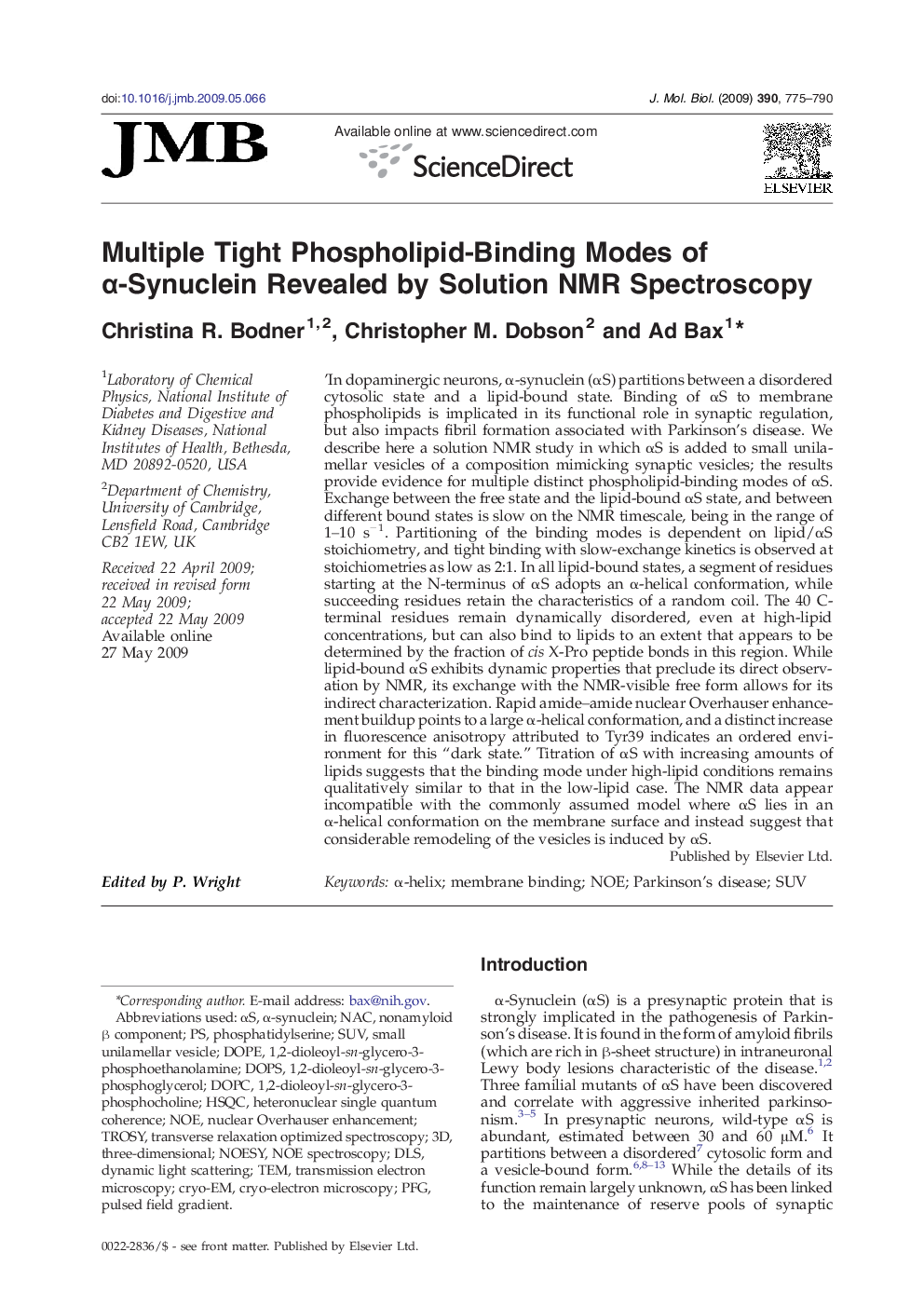| کد مقاله | کد نشریه | سال انتشار | مقاله انگلیسی | نسخه تمام متن |
|---|---|---|---|---|
| 2186499 | 1096063 | 2009 | 16 صفحه PDF | دانلود رایگان |

'In dopaminergic neurons, α-synuclein (αS) partitions between a disordered cytosolic state and a lipid-bound state. Binding of αS to membrane phospholipids is implicated in its functional role in synaptic regulation, but also impacts fibril formation associated with Parkinson's disease. We describe here a solution NMR study in which αS is added to small unilamellar vesicles of a composition mimicking synaptic vesicles; the results provide evidence for multiple distinct phospholipid-binding modes of αS. Exchange between the free state and the lipid-bound αS state, and between different bound states is slow on the NMR timescale, being in the range of 1–10 s− 1. Partitioning of the binding modes is dependent on lipid/αS stoichiometry, and tight binding with slow-exchange kinetics is observed at stoichiometries as low as 2:1. In all lipid-bound states, a segment of residues starting at the N-terminus of αS adopts an α-helical conformation, while succeeding residues retain the characteristics of a random coil. The 40 C-terminal residues remain dynamically disordered, even at high-lipid concentrations, but can also bind to lipids to an extent that appears to be determined by the fraction of cis X-Pro peptide bonds in this region. While lipid-bound αS exhibits dynamic properties that preclude its direct observation by NMR, its exchange with the NMR-visible free form allows for its indirect characterization. Rapid amide–amide nuclear Overhauser enhancement buildup points to a large α-helical conformation, and a distinct increase in fluorescence anisotropy attributed to Tyr39 indicates an ordered environment for this “dark state.” Titration of αS with increasing amounts of lipids suggests that the binding mode under high-lipid conditions remains qualitatively similar to that in the low-lipid case. The NMR data appear incompatible with the commonly assumed model where αS lies in an α-helical conformation on the membrane surface and instead suggest that considerable remodeling of the vesicles is induced by αS.
Journal: Journal of Molecular Biology - Volume 390, Issue 4, 24 July 2009, Pages 775–790